d. Palmer Sculpture Biennial 2020
We are privileged to have as our photographer for the 2020 Biennial, leading South Australian photographer Michal Kluvanek.
John Neylon has reviewed the 2020 Biennial in The Adelaide Review. You can read it below Michal’s images.
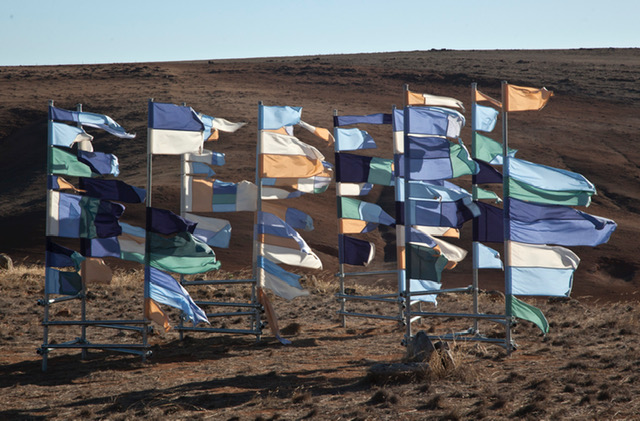
Alexander Arcus – Thoughts on Water Over Rocks – Photo by Michal Kluvanek
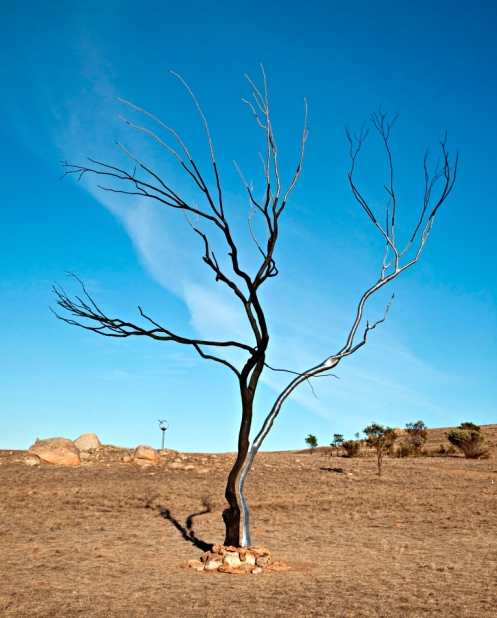
David Atkins – Dead Tree ii, Reconcilliation – Photo by Michal Kluvanek

Geoffrey Bartlett – Embrace Number 2 (Revised) 2020 – Photo by Michal Kluvanek
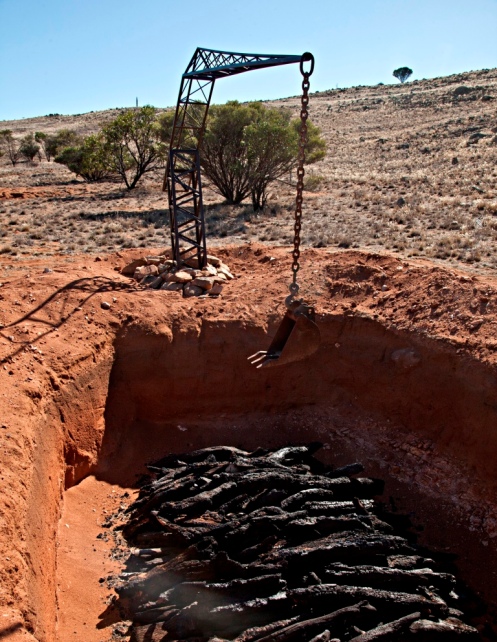
Steven Bellosguardo – Coaldigga – Photo by Michal Kluvanek
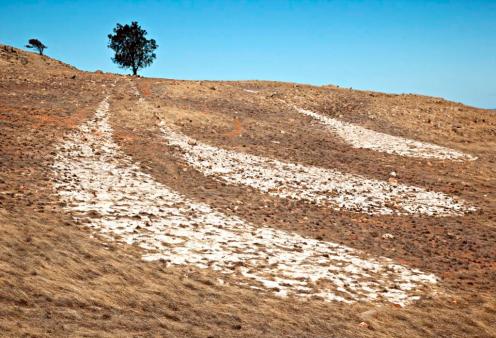
Carlotta Brunetti – Drops – Photo by Michal Kluvanek
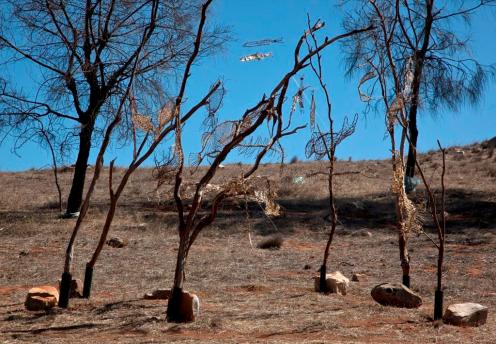
Jan Clifford – Out of Water – Photo by Michal Kluvanek
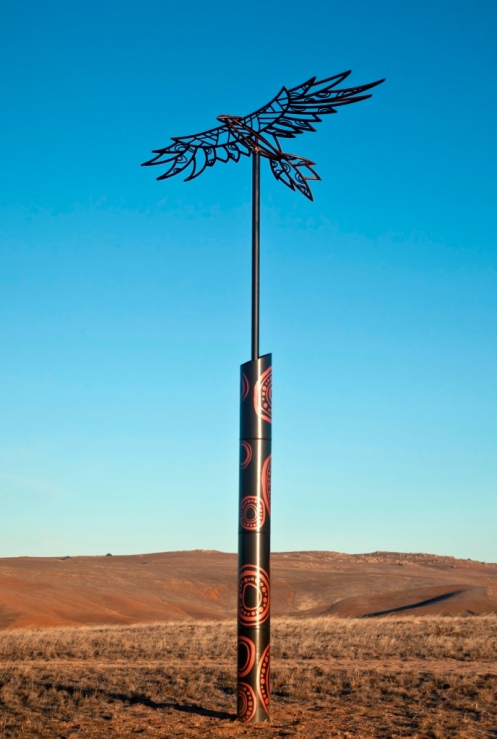
Elizabeth Close & Clancy Warner – Of the Land and the Sky – Photo by Michal Kluvanek
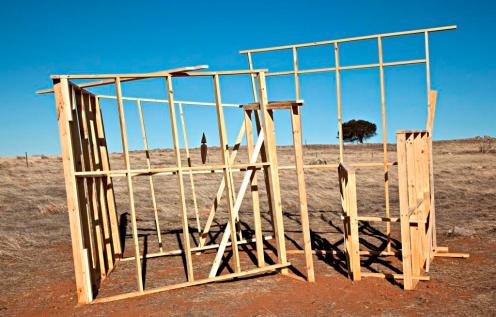
Steven Cybulka – 1st Fix – Photo by Michal Kluvanek
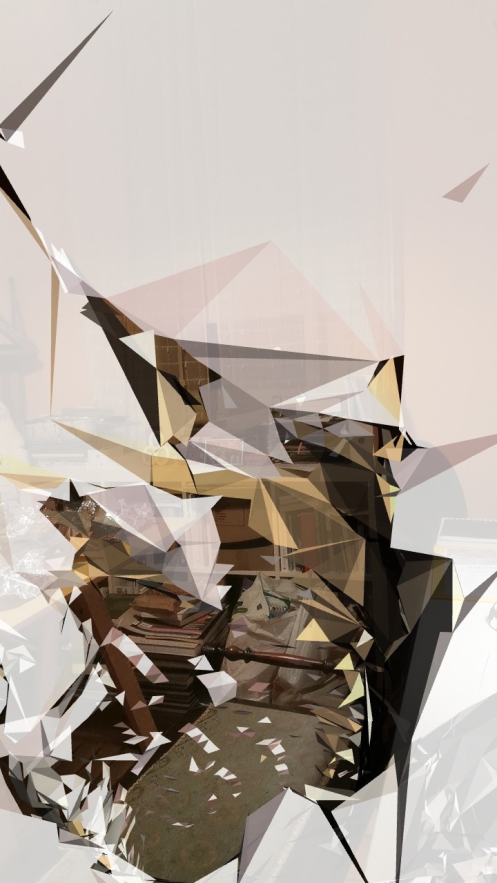
Dr Maarten Daudeij – All Silence Sees is Song – Image by Maarten Daudeij
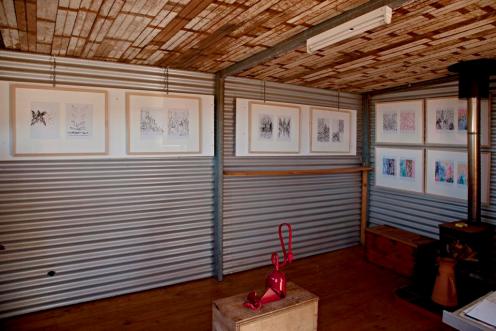
Ron Robertson-Swann – Out the Other Side, and Titus Eichenberger – Carbon & Contradicting Palmer – Photo by Michal Kluvanek
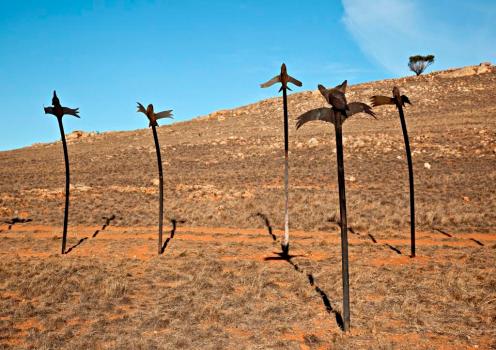
Ian Hamilton – The Watchers – Photo by Michal Kluvanek
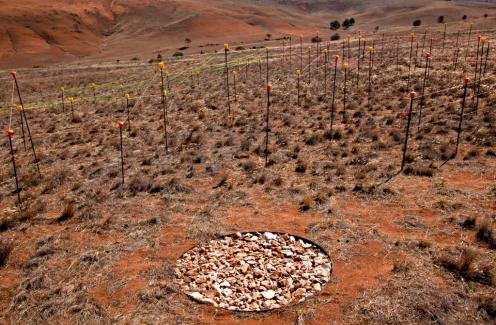
John Hayward – The Site – Photo by Michal Kluvanek
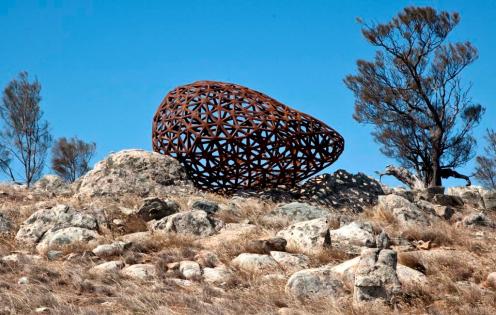
David Jensz – Pebble, 2020 – Photo by Michal Kluvanek
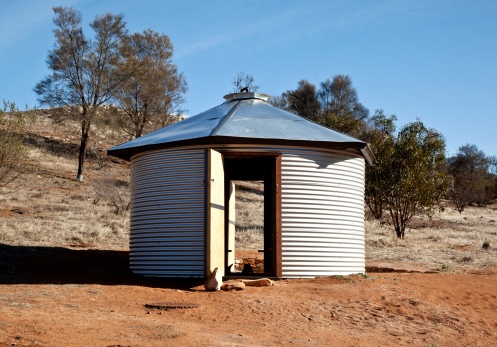
Greg Johns – The Round Space – Photo by Michal Kluvanek
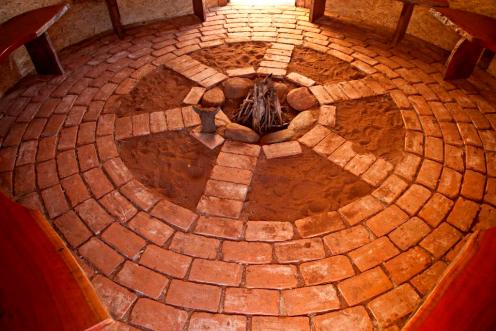
Greg Johns – The Round Space (interior) -Photo by Michal Kluvanek
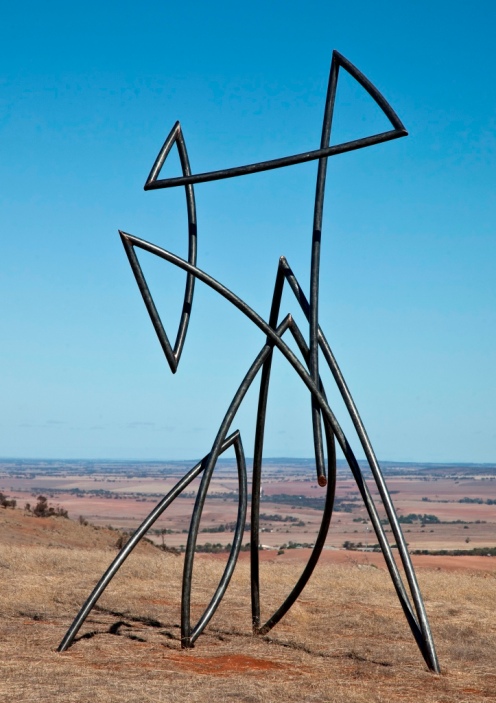
Chris Ormerod – Dalnotter – Photo by Michal Kluvanek
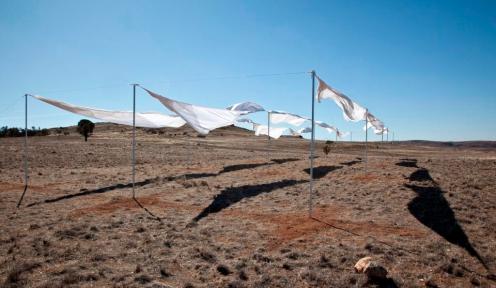
Astra Parker – A plane at drift – Photo by Michal Kluvanek
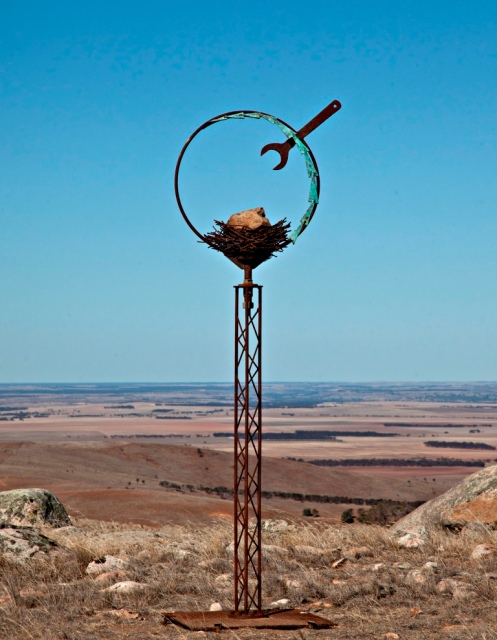
Will Powrie – Industrial Incubator – Photo by Michal Kluvanek
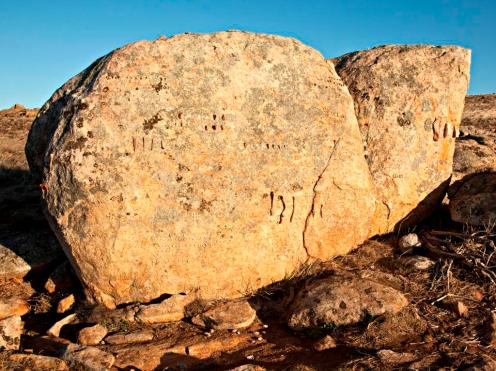
Tamsin Salehian – Museum of the Hill – Photo by Michal Kluvanek
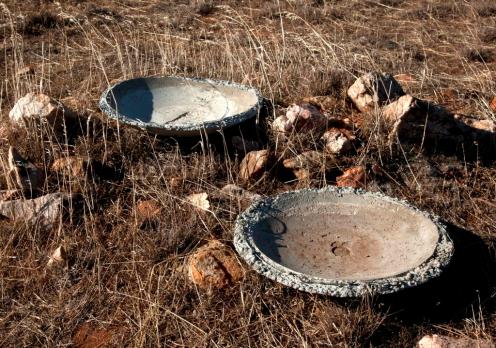
Georgia Scott-Mills – Concrete Dishes, 2020 – Photo by Michal Kluvanek
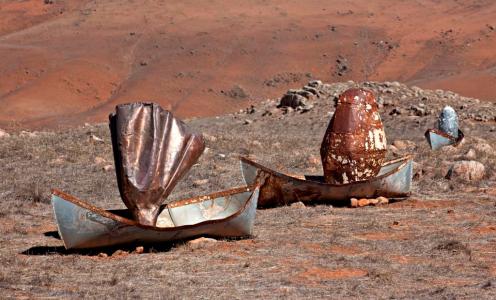
Deb Sleeman – Refuge Seekers – Photo by Michal Kluvanek
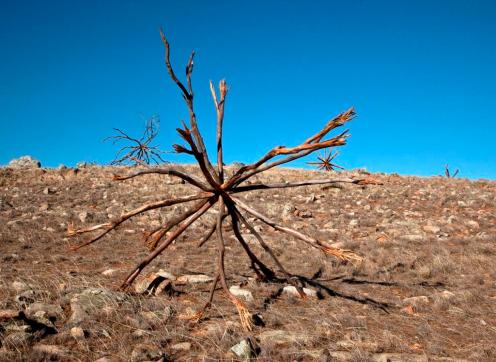
Marcus Tatton – Dispersal – Photo by Michal Kluvanek
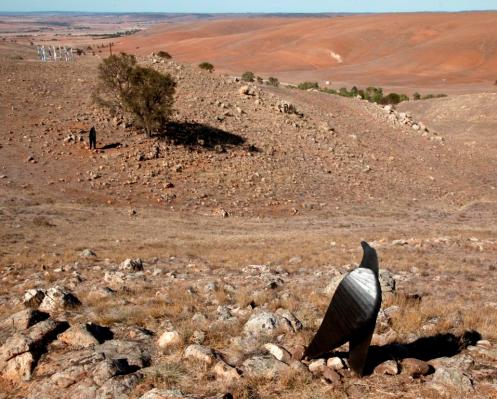
Nicholas Uhlmann – Huginn and Muninn – Photo by Michal Kluvanek
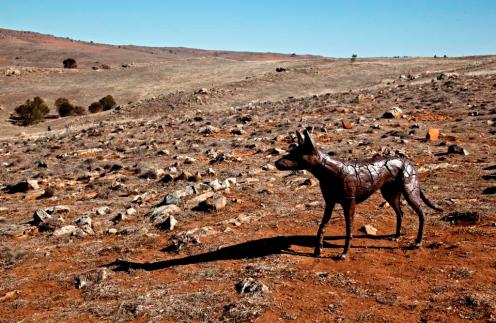
Clancy Warner – Dust to Dust – Photo by Michal Kluvanek
John Neylon, The Adelaide Review, April 2020, no. 482
In the middle of the air
Palmer Sculpture Biennial 2020
14 March – 12 April 2020
For a certain kind of sculpture to be made, places like Palmer need to exist. The primary reason? It has to fight for survival. When it comes to art, Palmer is a hostile environment. Each work sited here has to rely on its own wits to grapple with such demanding terrain rather than lean on each other for visual support in more curated surroundings. Importantly they all have room to breathe. The end result is that the viewer has multiple opportunities to engage. Approaching Carlotta Brunetti’s Drops, for example, involves calculating how far to walk and from what position to best view it. The white sand which defines the ‘water drops’ has already begun to disperse with the action of wind, creating a ghost image of its original state. This work re-inserts the concept of liquidity into the Palmer conversation. An ebb and flow dynamic has always been part of the Palmer sculptural experience. Works viewed from a distance tend to shimmer and dissolve in the heat and glaring light. Brunetti’s work reminds that stasis and instability are co-partners in a dance of probabilities. Incidentally this idea of juxtaposing separate entities is also the driving force behind Jeffrey Bartlett’s Embrace # 2, a swaying alliance of curvature and spikiness. Allied to fluidity is the idea of flight and weightlessness. There are a number of work in the 2020 PSB which play off the gravid mass of the boulder strewn landscape with senses of soaring freedom associated with birds, clouds and wind-snapped fabrics. Elizabeth Close and Clancy Warner have collaborated on a totemic form, Of the Land and the Sky, which is clearly inspired by the triumphant spread of a raptor’s wings as it hovers over the land. The infill patterns of the cloisonné-like designs imply hieratic benediction. Incidentally Will Powrie’s ‘nest’ (Industrial Incubator) acts a companion piece nearby, an eyrie for a mechanical age complete with spanner for maternal beak – another example of how, given reflection, different works in this and other Palmer Biennials create their own circles of conversations. Alexander Arcus’ Thoughts on Water Over Rocks, harnesses the massed fluttering of fabric pennants to “create a large shimmering object with constantly changing colours and patters within it, like a fast moving mountain stream or clouds over water.” Fabric in Astra Parker’s A plane at drift streams out over the landscape like ribbons of clouds to create a washing line fantasia about flights of consciousness defying earth bound limitations. With little effort it is possible to see a connection with Marcus Tatton’s Dispersal, a series of star-burst like forms made primarily from linear wooden units. They look about to be blown across the landscape like dandelion seeds. The last thing Jan Clifford’s Out of Water needs is too much wind. The installation is positioned protectively in the lee of a gully and suggests an atavistic shrine defined by dead trees and dangling fishes. This is a deliberately awkward, guilt-laden statement about the degradation of the Darling River and consequences for all river species and communities. Like Brunetti’s ‘drops’ it will in time be degraded by the elements, leaving skeletons to dangle in the wind. Contrast this with the structural certitude of Steven Cybulka’s 1st Fix. These structural units made from machined pine, were lying in the grass, when I saw them, ready to be raised into upright position to defy the the wind and offer conceptual resistance to the organic seduction of the terrain. John Hayward’s The Site invokes a similar sense of introducing or even imposing order on such a vast, unregulated site. He has acupunctured a small slice of hillside with metal rods connected by stretched coloured string. By such means archaeologists such as Hayward, fix their gaze and hope to follow that labyrinthine thread which leads (as in The Site) to an inner chamber of resolution. The triangulated cross-threading of Hayward’s installation finds an echo in the structural makeup of David Jensz’s Pebble. This artist hopes the work will prompt us “to imagine how inconsequential we are in the larger scheme of the Universe and the space time continuum.” Like many Palmer works its identity changes as the viewer – and even the work – move across the landscape. Pebble certainly did so while I was a bystander to its installation. A front end loader tip-toed with this outsized, slightly asymmetrical Easter Egg across an escarpment before delicately depositing it, as if one of Powrie’s mechanised eagles, into a nest of rocks. Scale, from Jensz’s perspective is everything with this work. Gazing up at a tiny ‘pebble’ is one way, he hopes, people will become more aware of insignificance in the bigger scheme of things. In some respect the Palmer site does this all the time. The diminution of any work sited here extends to the rhetoric of artistic intent which is carried off by the wind and limitless skies with ridiculous ease. Greg Johns has one answer, The Round Space, a sort of Glenn Murcutt meets James Turrel proposition. Once inside this light-sealed construction, all is dark. One could be and thoughts could go, anywhere. Suddenly the roof and doors open and views of the sky and land flood in. It’s a mandatory, physical and reflective experience to close out the 2020 Palmer experience.
John Neylon is arts writer for The Adelaide Review, independent curator and author of books and essays on South Australian art and artists.
Winners of the 2020 Palmer Artists’ Prize
The Biennial Artists’ Prize is peer reviewed, – the first of its kind in Australia. It is in fact three prizes. The first prize winner receives $100, a small sculpture donated by Greg and accommodation for a three week residency at Rae and Yuri Bolotin’s Big Ci, in the NSW Blue Mountains. There is also a second prize of $80 and a third prize of $50.
We are proud to announce that the first prize winner in the 2020 Biennial is Astra Parker. Astra’s works have featured in several previous biennials and this year, her “A plane at drift” caused many to visit it repeatedly to experience it in more depth.
Unusually this year, both second and third prizes were tied. The Second Prize went to Deb Sleeman for “Refuge Seekers” and Greg Johns for “The Round Space”, while the Third Prize Was shared by Chris Ormerod for “Dalnotter” and Carlotta Brunetti for “Drops”. This is the third time that Carlotta has come from Germany to exhibit at Palmer and she has developed a strong following of admirers.
The Ninth Biennial included several very significant works, making the exercise of picking prize-winners particularly difficult this year. Our warm congratulations go to the winners for their excellent creations and to all the participating artists for their very impressive inspirational and technical achievements.
